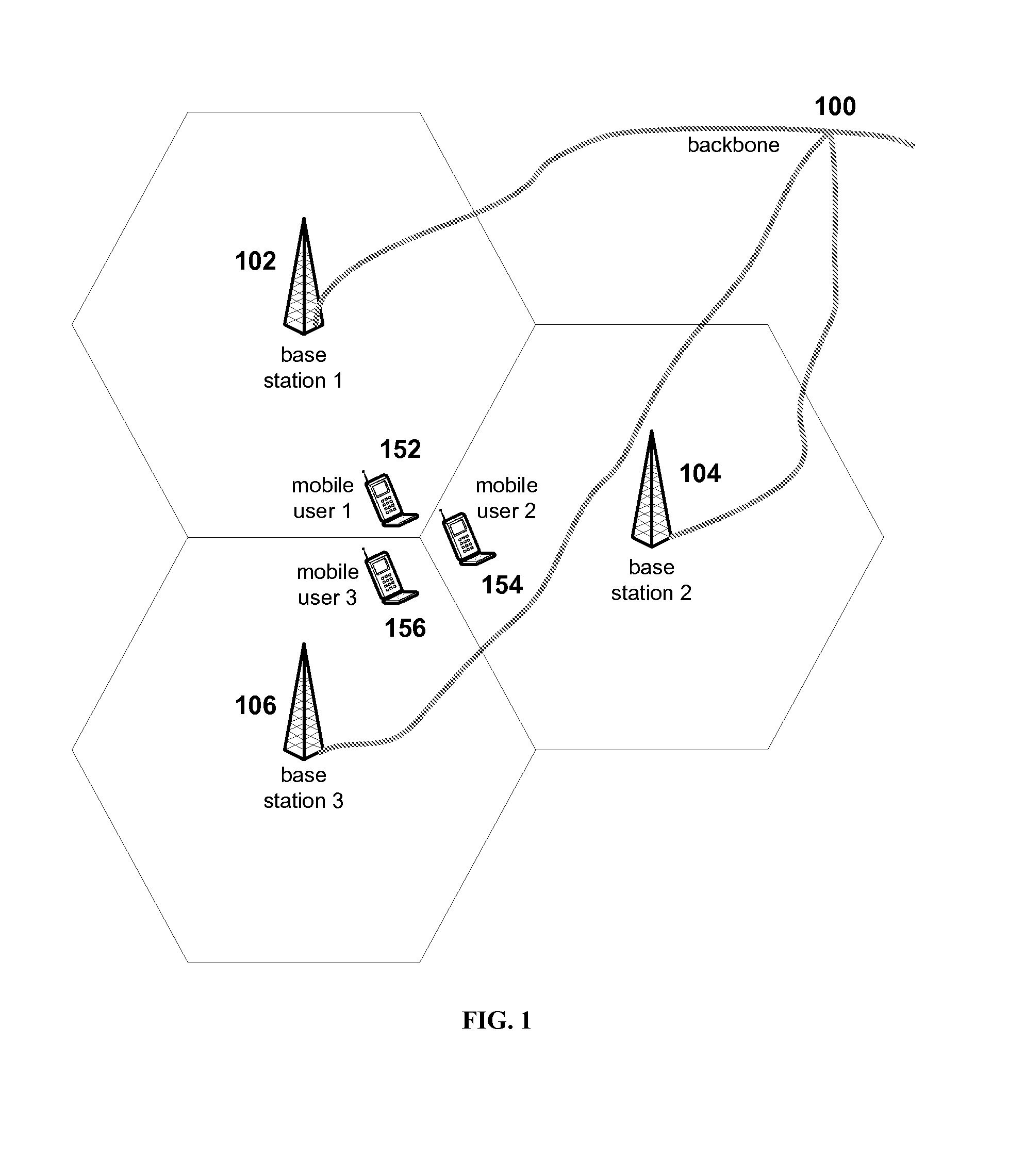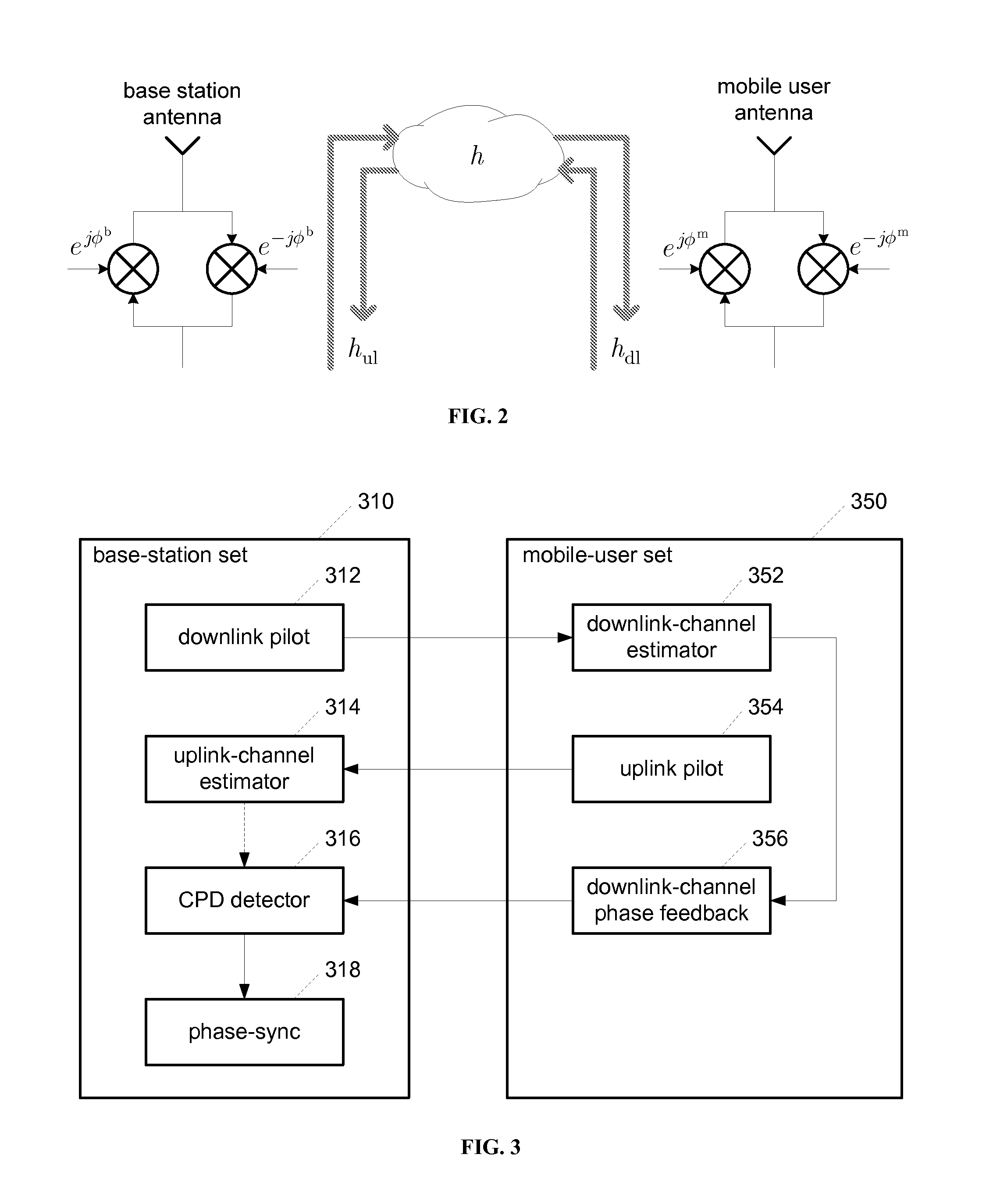Phase synchronization of base stations via mobile feedback in multipoint broadcasting
- Summary
- Abstract
- Description
- Claims
- Application Information
AI Technical Summary
Benefits of technology
Problems solved by technology
Method used
Image
Examples
Embodiment Construction
[0027]The disclosed subject matter will now described more fully hereinafter with reference to the accompanying drawings, in which some, but not all aspects or embodiments, are shown with like numerals referring to like elements throughout the description. Various aspects may be embodied in many different forms and should not be construed as limited to the embodiments set forth herein. Specific details are described for the purpose of providing a thorough understanding of the subject innovation. It may be evident, however, that the disclosed subject matter may be practiced without these specific details. In other instances, well-known methods, procedures, and components have not been described in detail so as not to obscure the subject innovation.
[0028]Various terms are used to describe counterparts that are communicating with each other in various communications networks. For example, in a wireless cellular network, “base station” and “mobile user” are used. More generic terms, “re...
PUM
 Login to View More
Login to View More Abstract
Description
Claims
Application Information
 Login to View More
Login to View More - R&D
- Intellectual Property
- Life Sciences
- Materials
- Tech Scout
- Unparalleled Data Quality
- Higher Quality Content
- 60% Fewer Hallucinations
Browse by: Latest US Patents, China's latest patents, Technical Efficacy Thesaurus, Application Domain, Technology Topic, Popular Technical Reports.
© 2025 PatSnap. All rights reserved.Legal|Privacy policy|Modern Slavery Act Transparency Statement|Sitemap|About US| Contact US: help@patsnap.com



